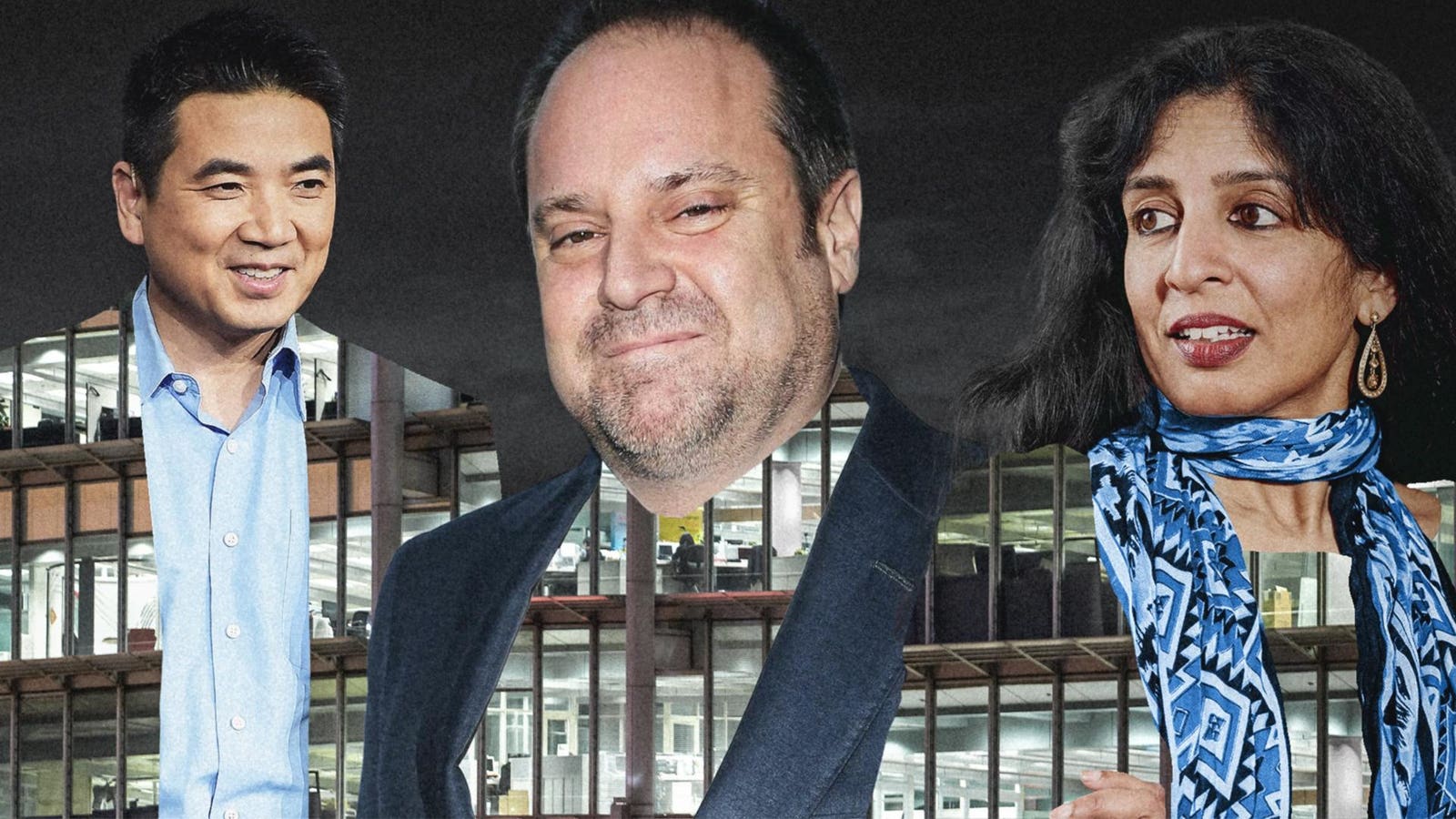A handful of immigrant billionaires got their start in the U.S. with the help of a visa designed to lure highly skilled talent. Now, some of the nation’s biggest, billionaire-backed tech firms are the most prolific users of these H-1B visas. Jeff Skoll, the Canadian engineer who was eBay’s first full-time hire and its first president, thought his future in the U.S. was secure back in the late 1990s. After having spent three years at the helm of the fledgling e-commerce company – creating its business plan, overseeing it as it grew to 3,000 employees before going public in 1998 – he was baffled when his request in 1999 to renew his H-1B visa, which allows skilled foreigners to work legally in the U.S., was rejected. “The H-1B was essential for me,” Skoll tells Forbes. “Otherwise, I would’ve had to leave the country, and I can’t say if eBay would’ve survived [those] early years.” Financially, Skoll would have been fine, though. A year after eBay’s IPO, he became a billionaire thanks to his stock ownership. Determined to keep his job at eBay, Skoll turned to then-Senator Dianne Feinstein of California and then-Vice President Al Gore for assistance, thanks to an introduction made by Steve Westly, a well-connected executive and Democratic donor at eBay. With Feinstein’s help, Skoll successfully petitioned for a different kind of visa called an O-1– for immigrants of “extraordinary ability” in business and other fields – before later obtaining his green card and eventually, his U.S. citizenship in 2007. Says Skoll now, “It’s not about avoiding hiring Americans. There just aren’t enough Americans to fill the needs of these companies.” That’s why so many of America’s best known and most dynamic tech companies are among the top employers for folks on H-1B visas. That includes Jeff Bezos’ Amazon, Bill Gates’ Microsoft, Mark Zuckerberg’s Meta and Larry Page’s Google, according to U.S. Citizenship and Immigration Services, an arm of the Department of Homeland Security. “It’s more than an immigration policy,” biotech billionaire and LA Times owner Patrick Soon-Shiong recently told Forbes. The South African immigrant came to Los Angeles as a surgical resident in 1980 and says that such visas are “living proof of the American dream in action.” Elon Musk, the nation’s most famous immigrant these days, is another huge fan of H-1B and his electric vehicle company, Tesla, is now among the top 25 U.S. employers using such visas, the first time it appears in the ranks. (For first time visas, it ranked at number 16). “The reason I’m in America along with so many critical people who built SpaceX, Tesla and hundreds of other companies that made America strong is because of H-1B,” Musk said on X in December. Created in 1990, the H-1B visa was designed to spur immigration of talented workers like scientists, engineers and educators. The temporary visa, which lasts up to three years and can be renewed, quickly became a popular hiring tool in Silicon Valley. For years, the number of visas awarded annually–via a lottery system–varied, ranging from 48,600 new visas issued in 1992 to 163,600 in 2001. Since 2006, the cap has been fixed at 85,000 annually–20,000 of which are reserved for foreign workers who obtain a master’s degree or doctorate from a U.S. university. By Forbes’ count, roughly 12% of American billionaires are immigrants, but of those only a handful benefited personally from an H-1B visa early in their career here. Here are a few: Jeff Skoll, born in Canada, with a net worth of $5.2 billion, studied electrical engineering at the University of Toronto and later obtained an MBA from Stanford University. He met eBay founder Pierre Omidyar, who hired him in 1995 as president of the startup. Skoll began working at eBay on a J-1 student visa for 18 months before landing an H-1B visa. Eric Yuan, born in China, with a net worth of $5 billion, faced eight rejections to his visa applications before finally obtaining an H-1B in 1997 to work at web conferencing startup WebEx in Silicon Valley. Rajiv Jain, born in India, with a net worth of $4.9 billion, moved to the U.S. to pursue an MBA at the University of Miami in the early 1990s before obtaining an H-1B visa. Jayshree Ullal, born in the United Kingdom, with a net worth of $4.7 billion, moved to the U.S. to pursue engineering degrees at San Francisco State University and Santa Clara University. She received an H-1B visa, though the specific job it was for remains undisclosed. Thierry Cruanes, born in France, with a net worth of $1.1 billion, kickstarted his career in the U.S. working for Oracle after earning a computer science Ph.D. in France in 1992. He cofounded cloud-based data storage giant Snowflake in 2012. H-1 VISA RECIPIENTS (pre-1990) include Patrick Soon-Shiong, born in South Africa, with a net worth of $6 billion, and Raj Sardana, born in India, with a net worth of $2 billion. — news from Forbes
